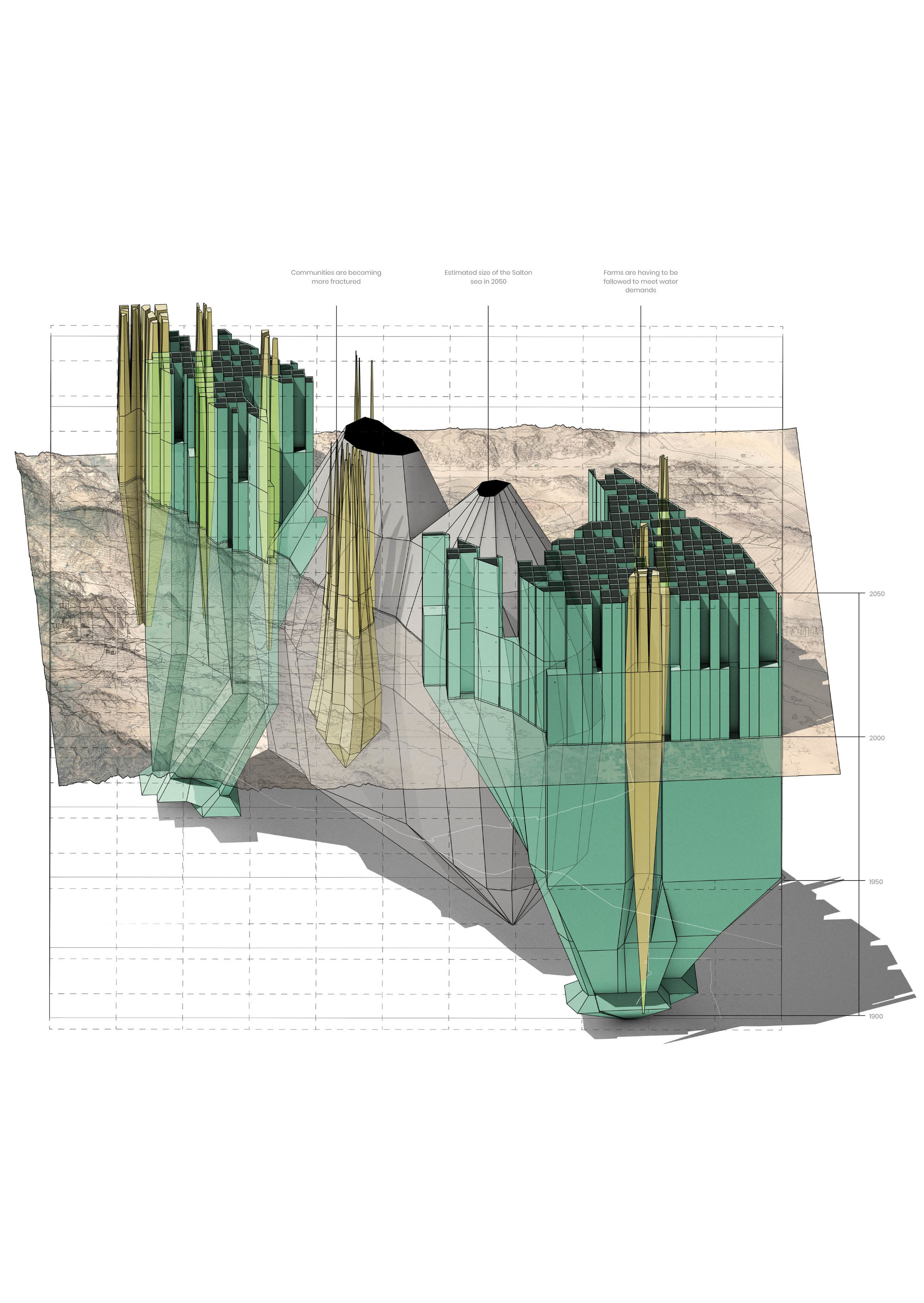
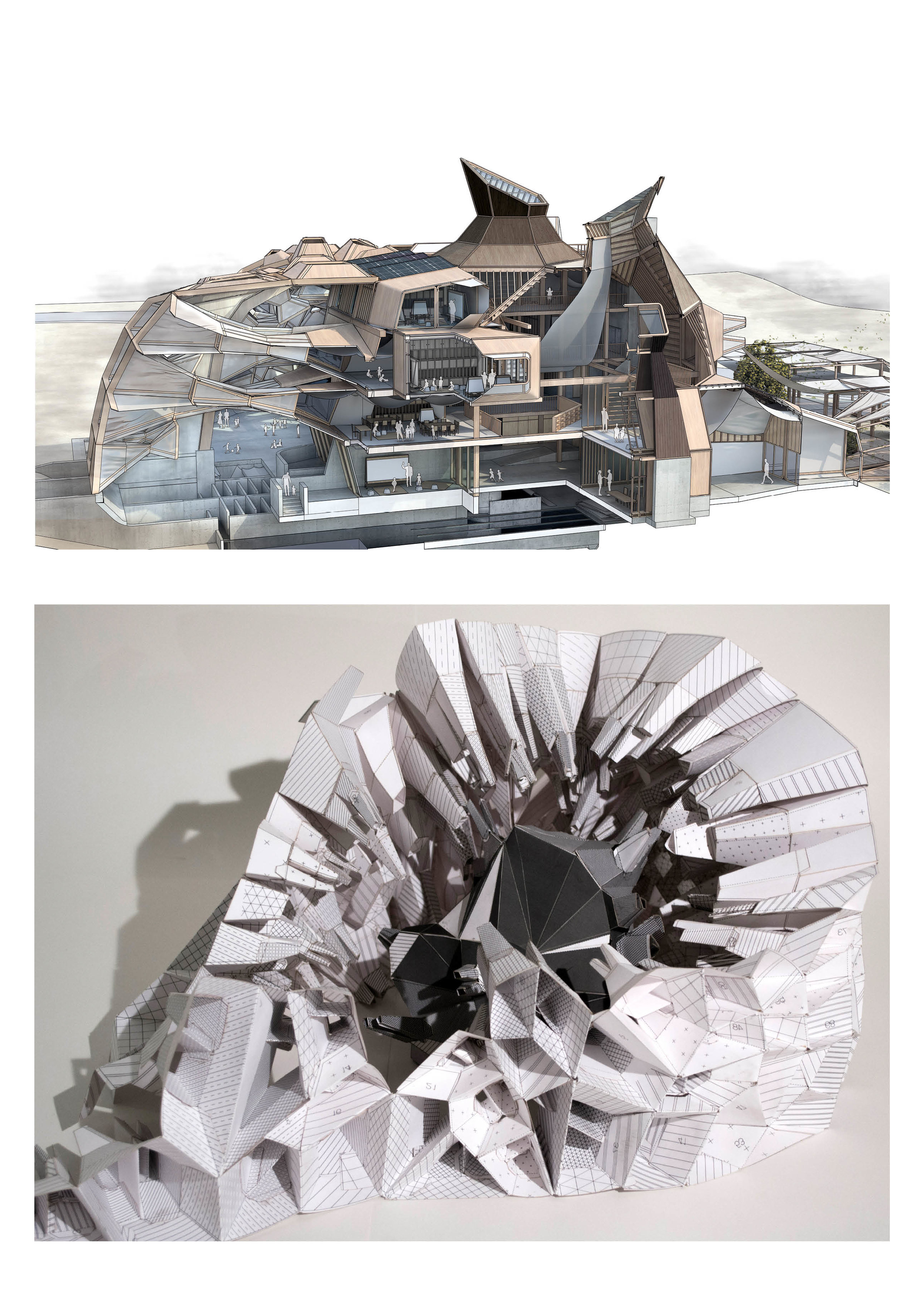

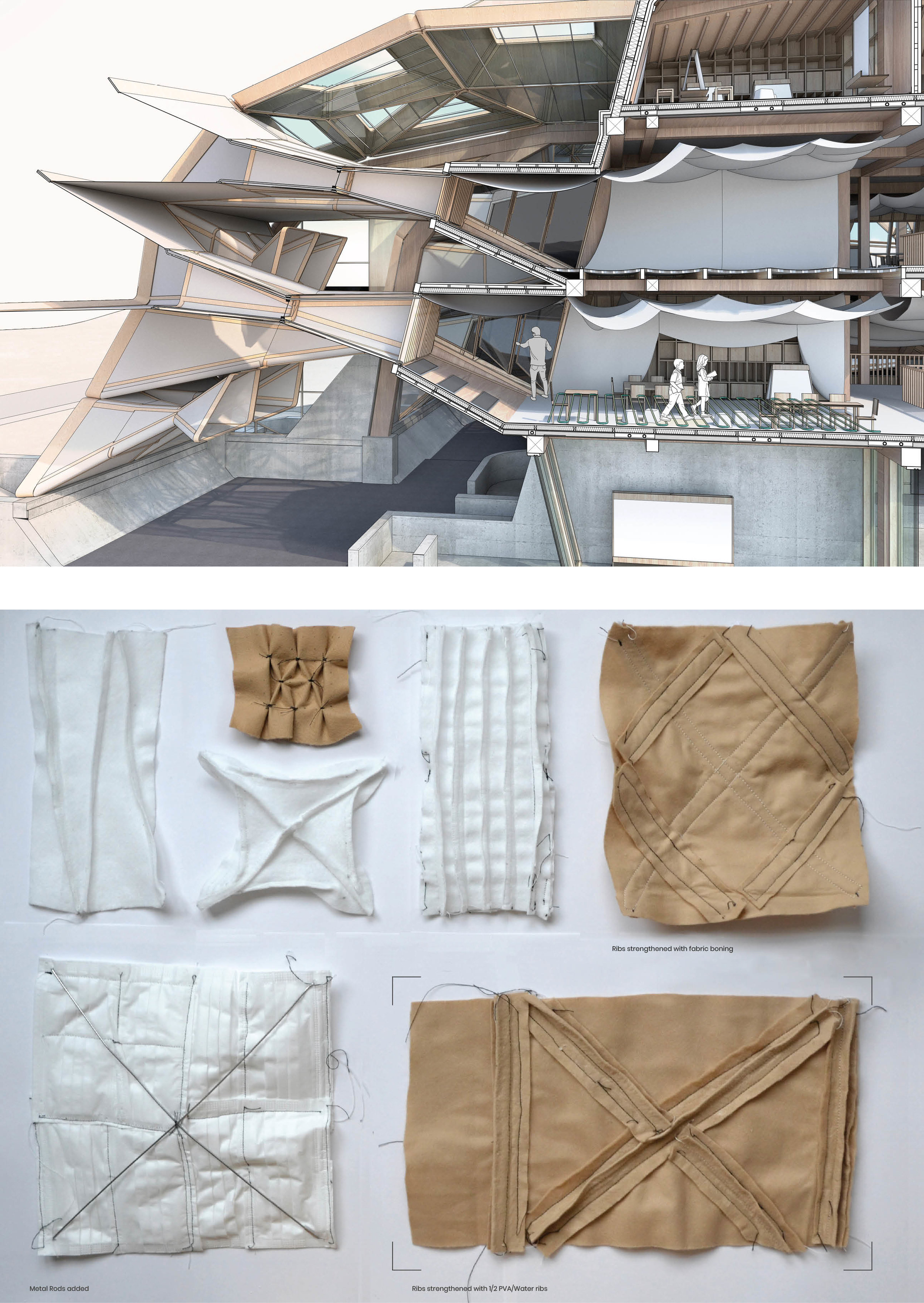
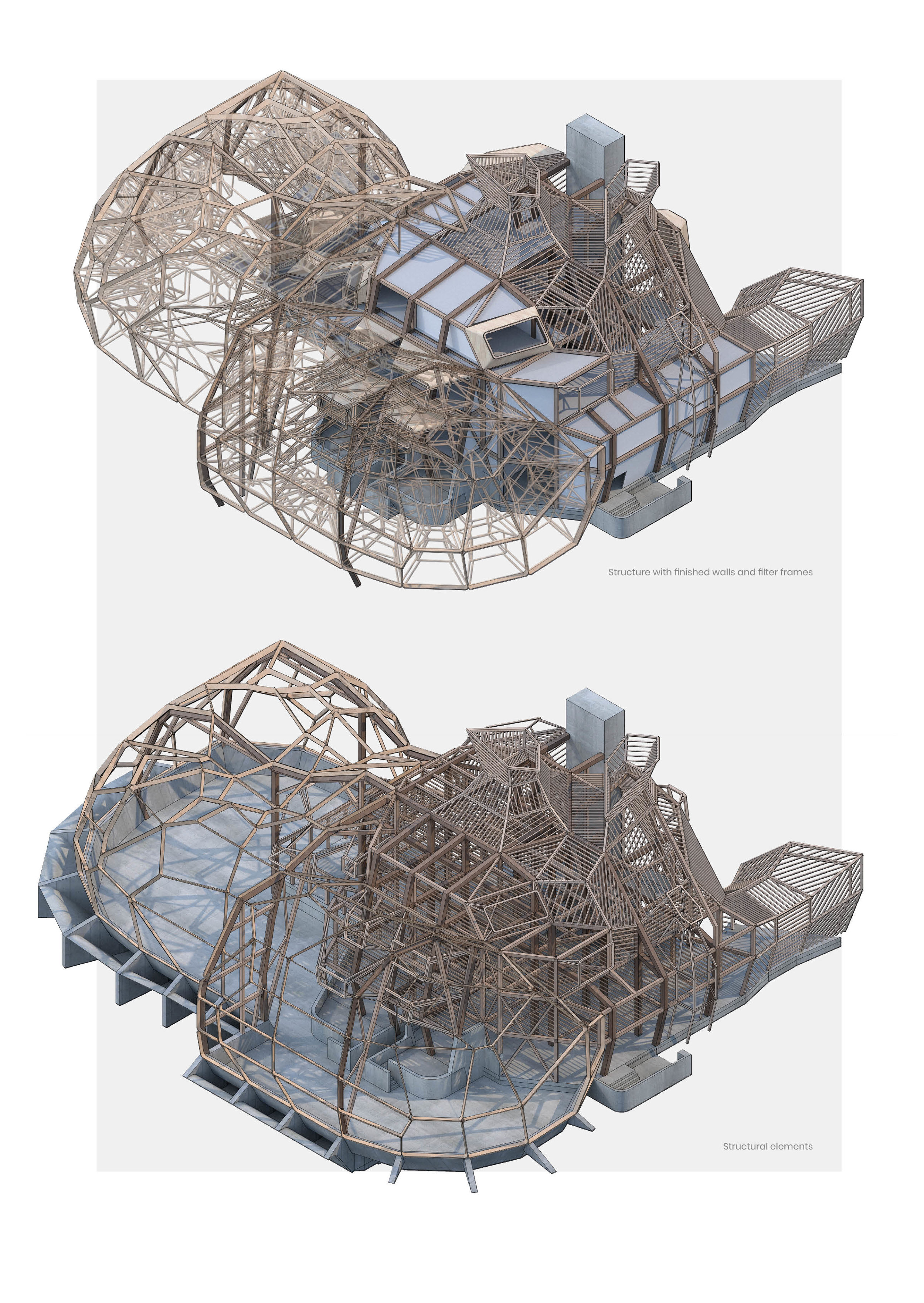
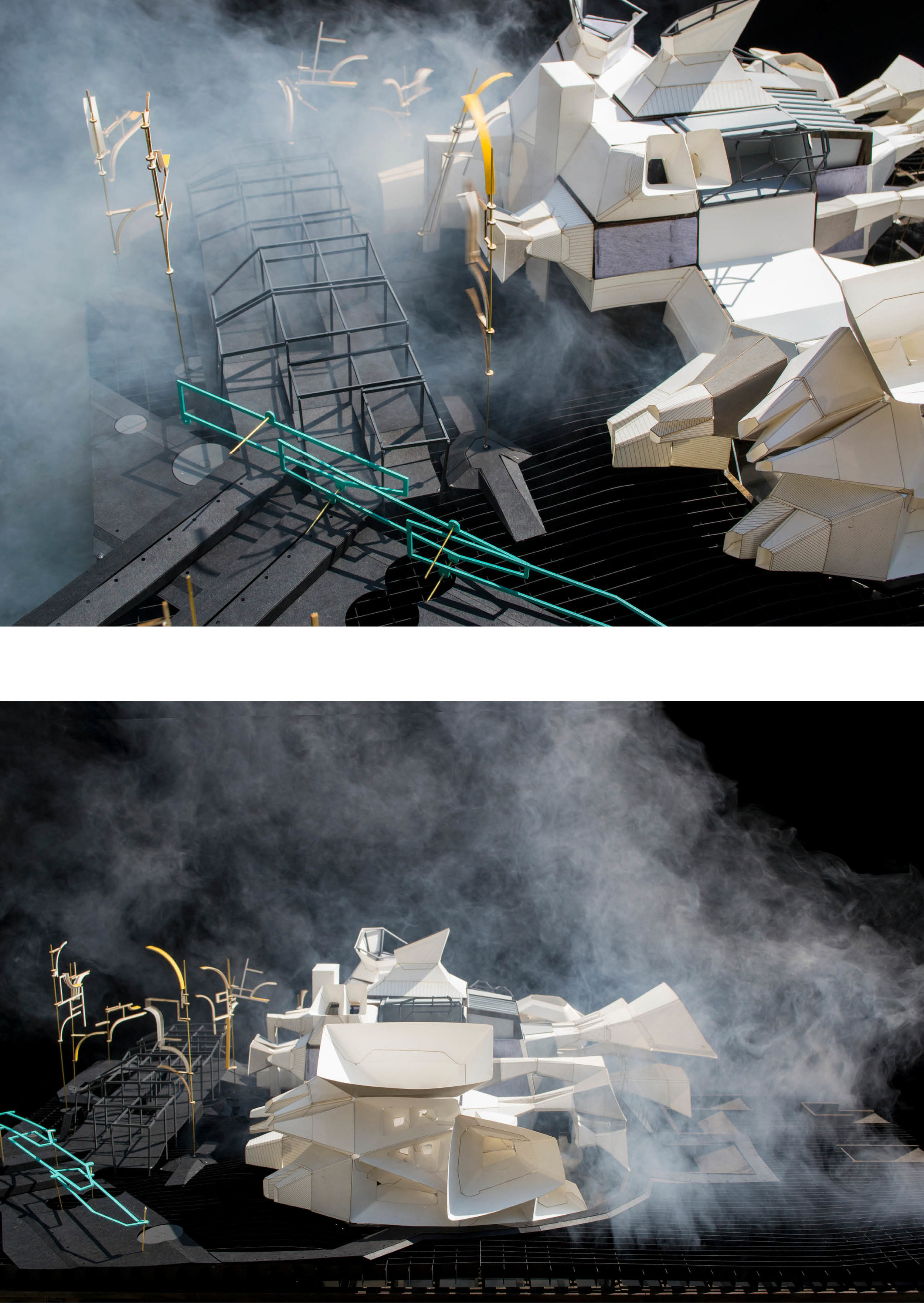
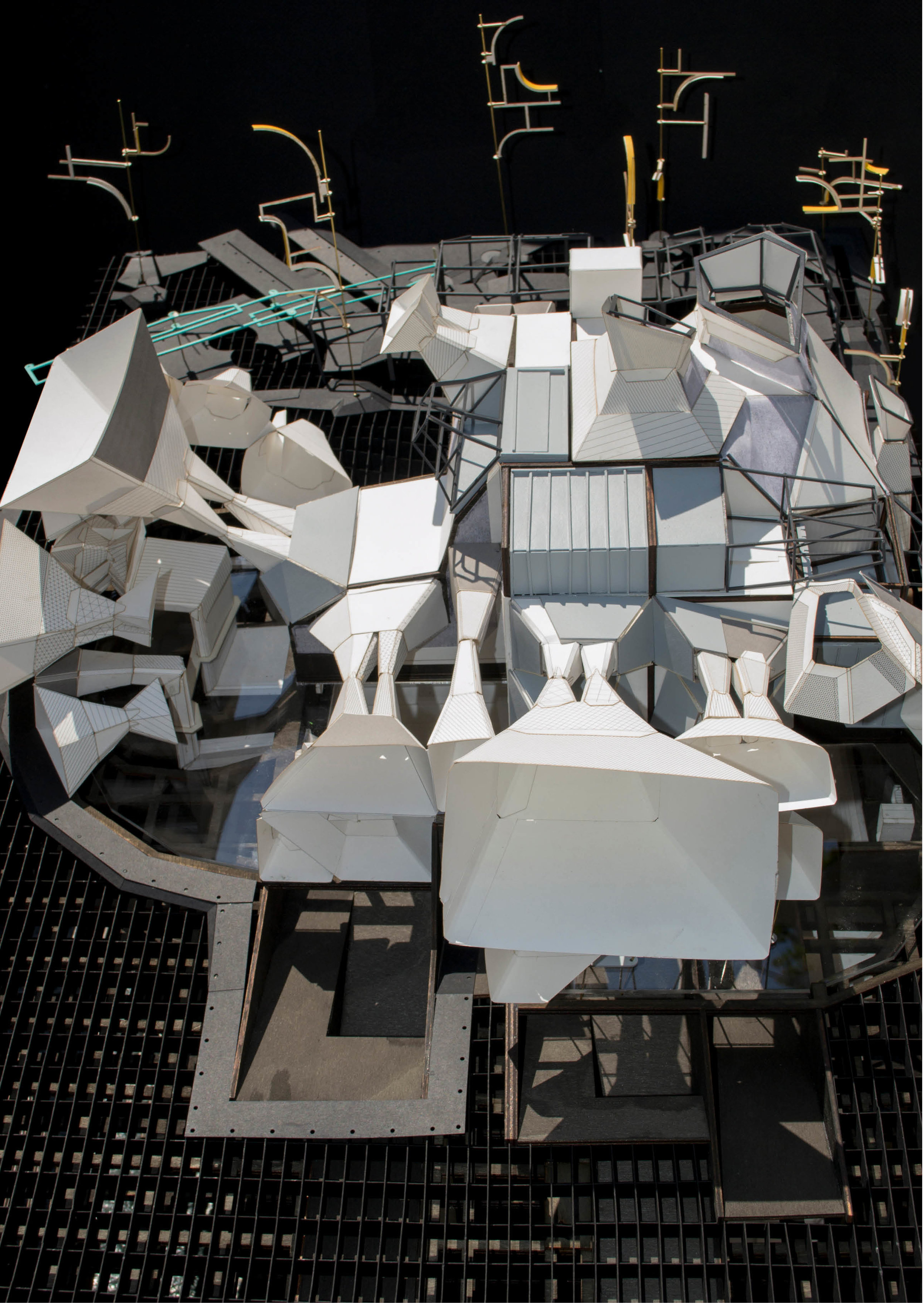
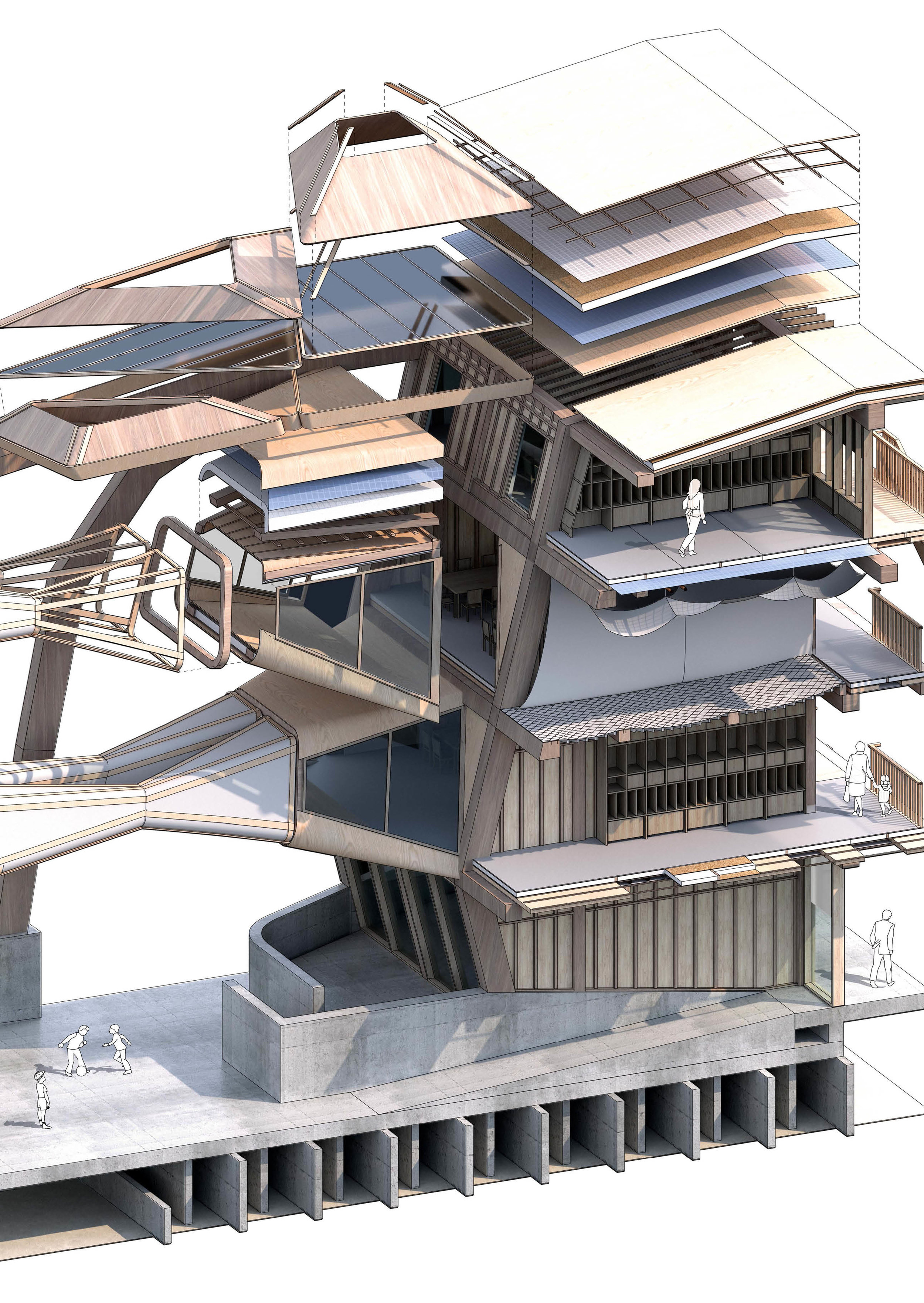
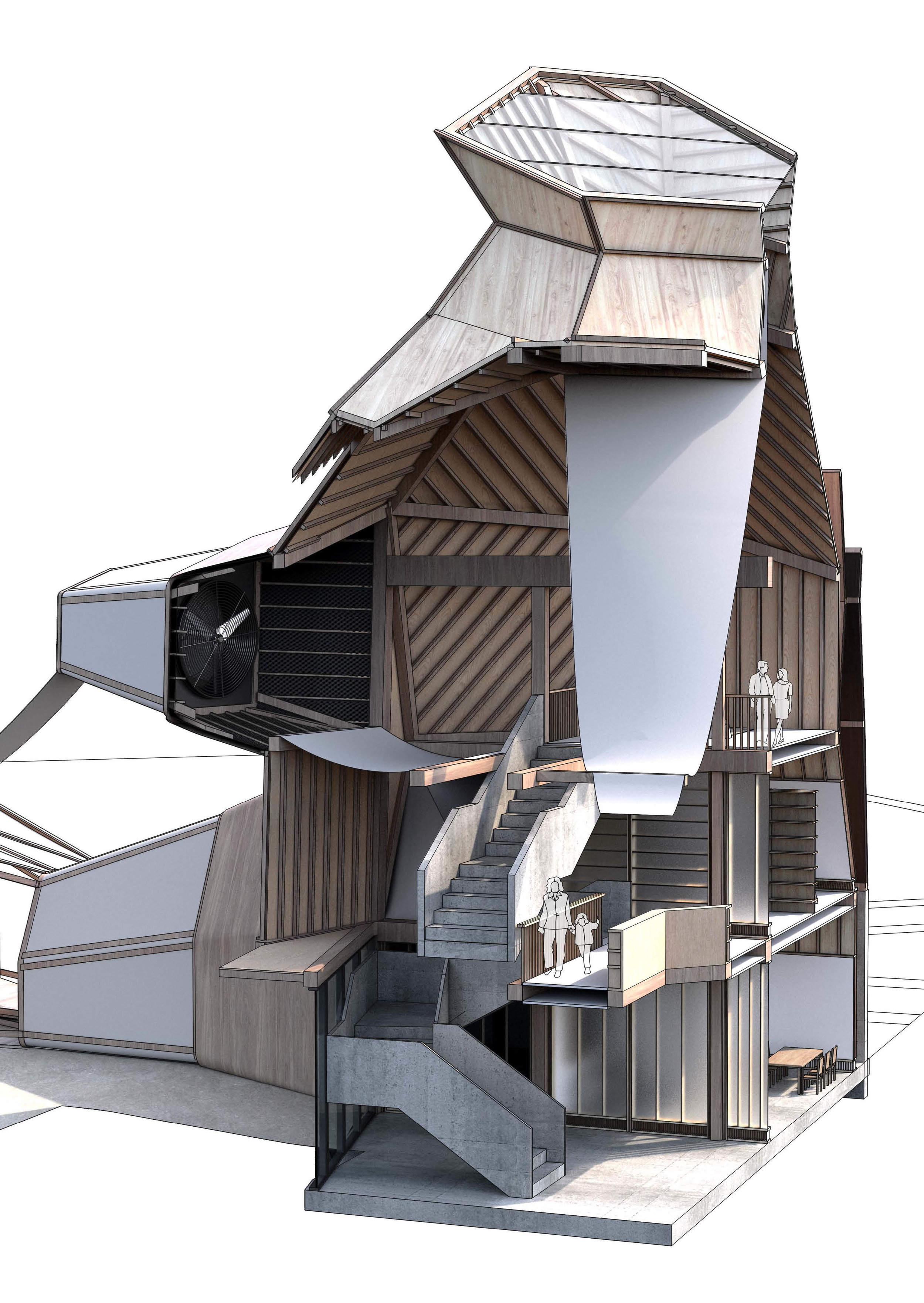
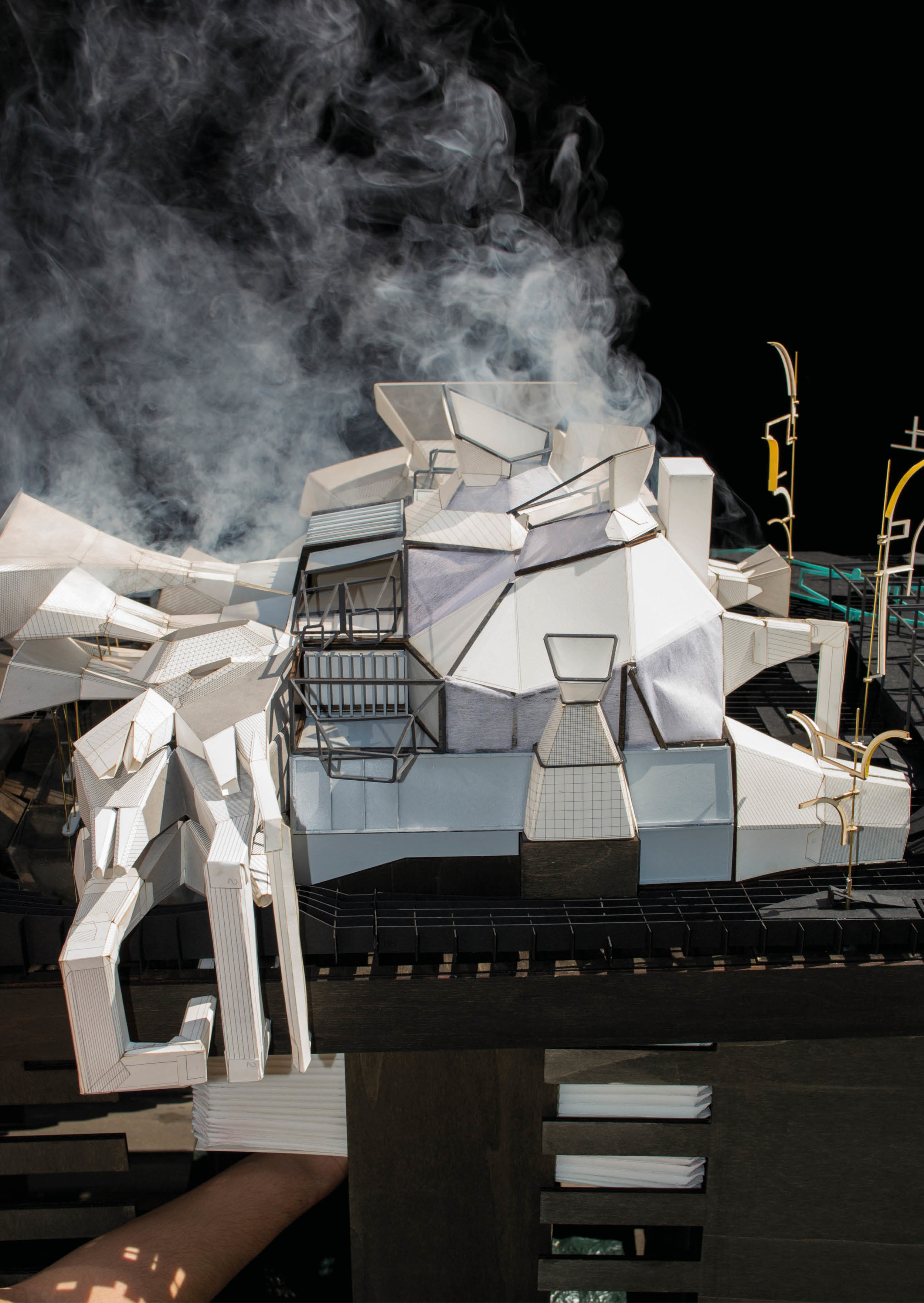
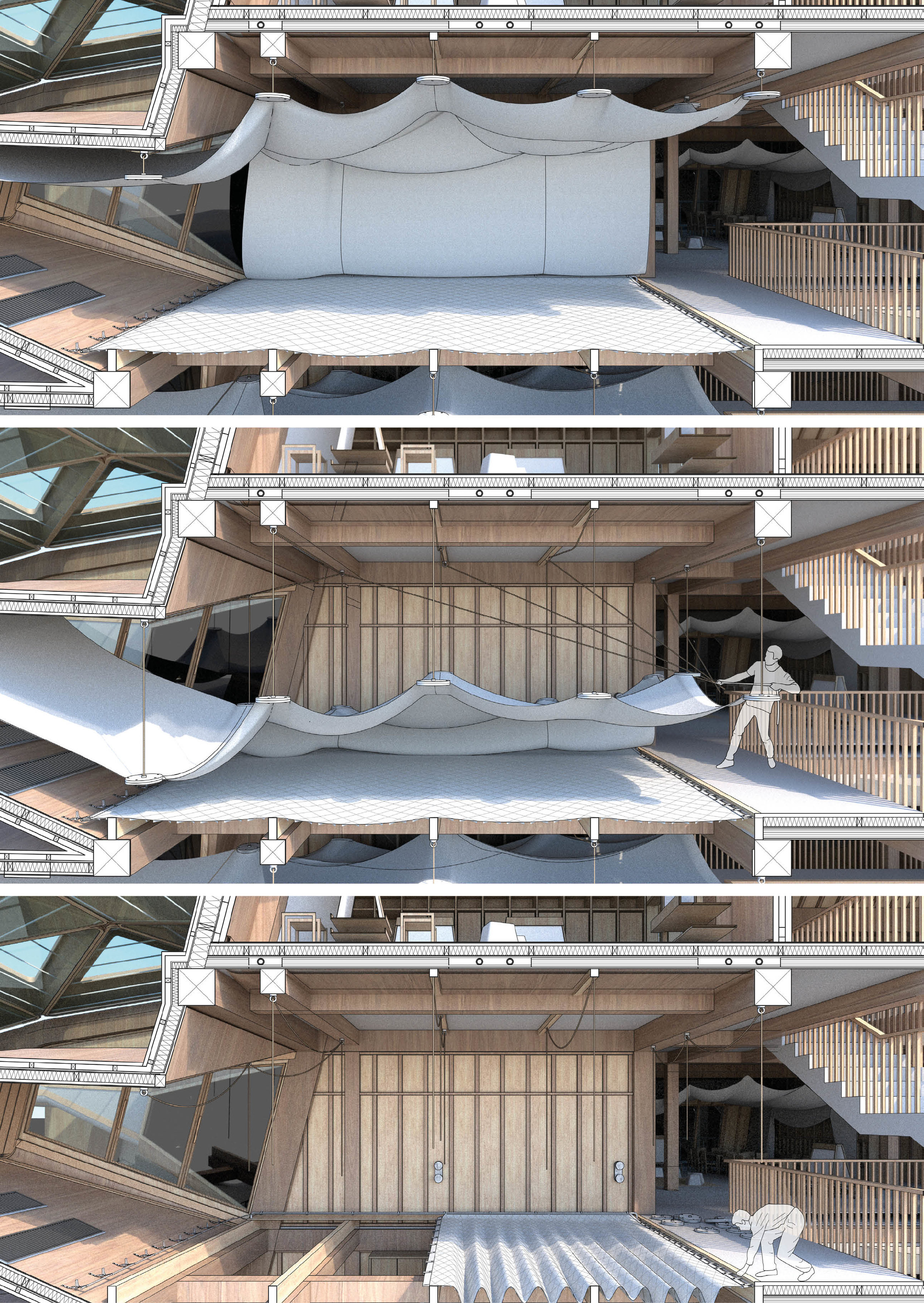

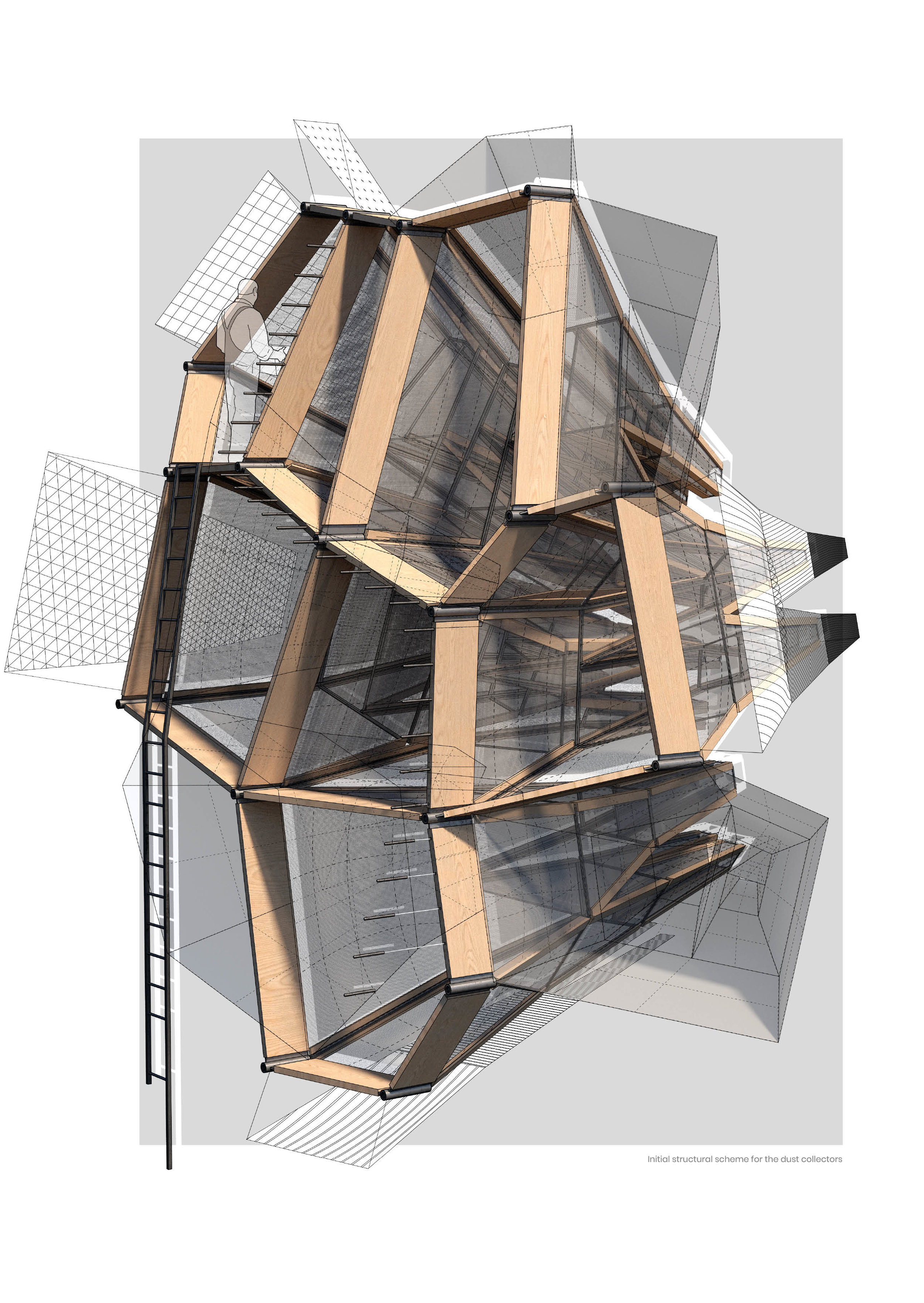
Andrew Chard Y4
Salton Sea Elementary School. America boasts some of the most diverse climates of any country, from forests and grasslands to deserts and alpine tundra, within all these conditions come unique challenges and hardships. Know as the Land of Liberty, for many communities throughout America, progression simply means the removal of the shackles that limit them. The North Shore, California, is an example of this, here particulate matter from the receding Salton Sea floods the surrounding neighbourhoods in toxic polluted air, for many young children, when the desert winds are strong and the dust is thick, leaving the house is not an option.
Salton Sea Elementary School aims to help the inhabitants of the Salton Sea by providing a dust-free safe haven. Designed to utilise the strong dusty winds which plague the area, filters harness the prevailing winds to capture, funnel and clean the air, creating a dust free oasis inside. Contrasting with high resource, mechanical filters, the architectural components of the building are formed to perform this task themselves, utilising pressure changes to drive filtered air around the open plan school. Throughout the scheme these architectural filters go on to replace elements inside the school, becoming the ceilings, walls and fabric floors of the classrooms, helping to create internal variety and interest. Externally, the filter form is dictated by its role, and how it displaces air throughout the scheme, which was examined in a schematic breathing model, demonstrating how each component pushes or pulls air around the site and their affect on pollution levels around the school.
By imagining and understanding these filters the project begins to explore how advances in architectural technology may allow us to help counter previously ignored environmental issues, hypothesizing on the potential of architecture’s positive contribution to these communities.
